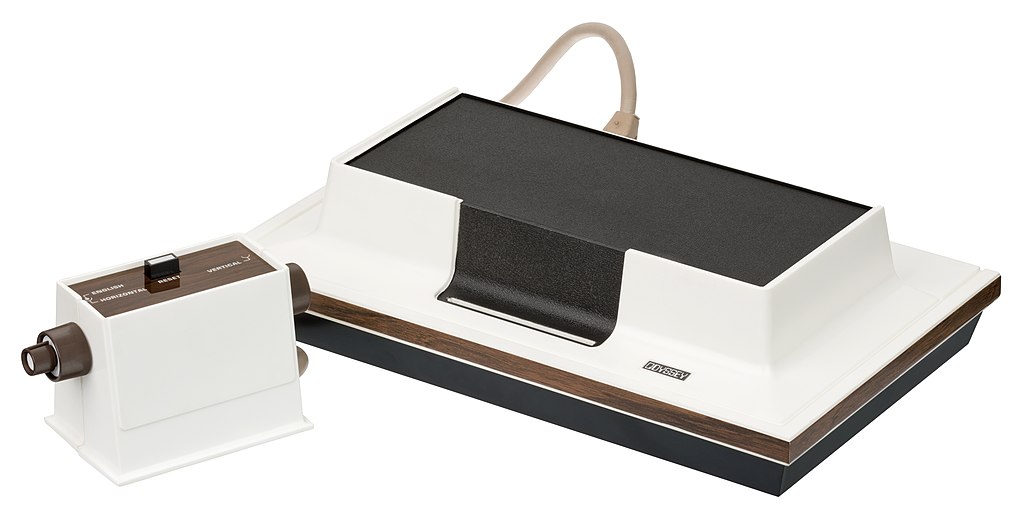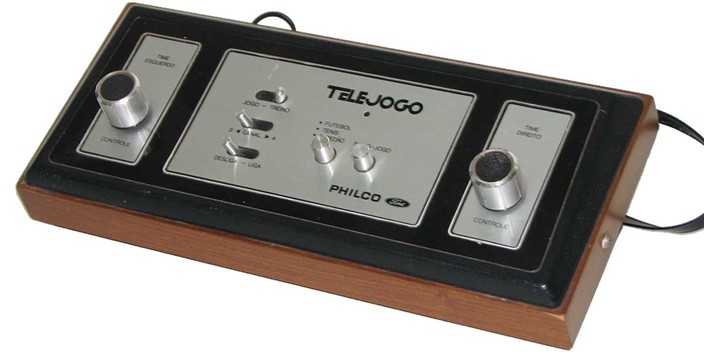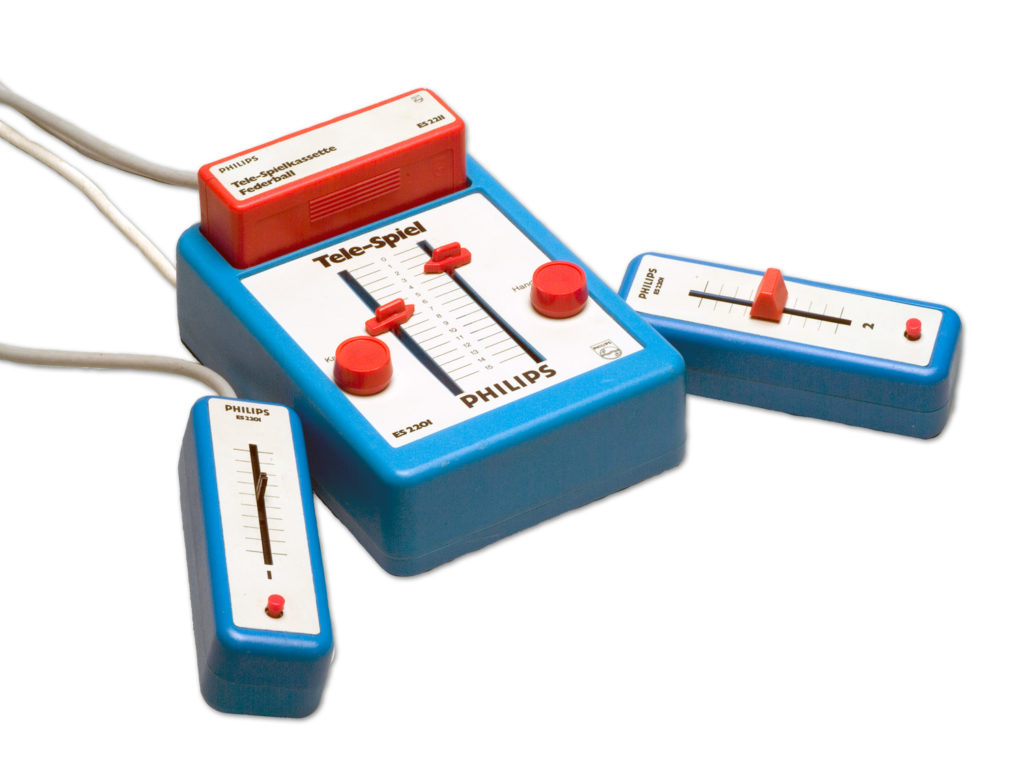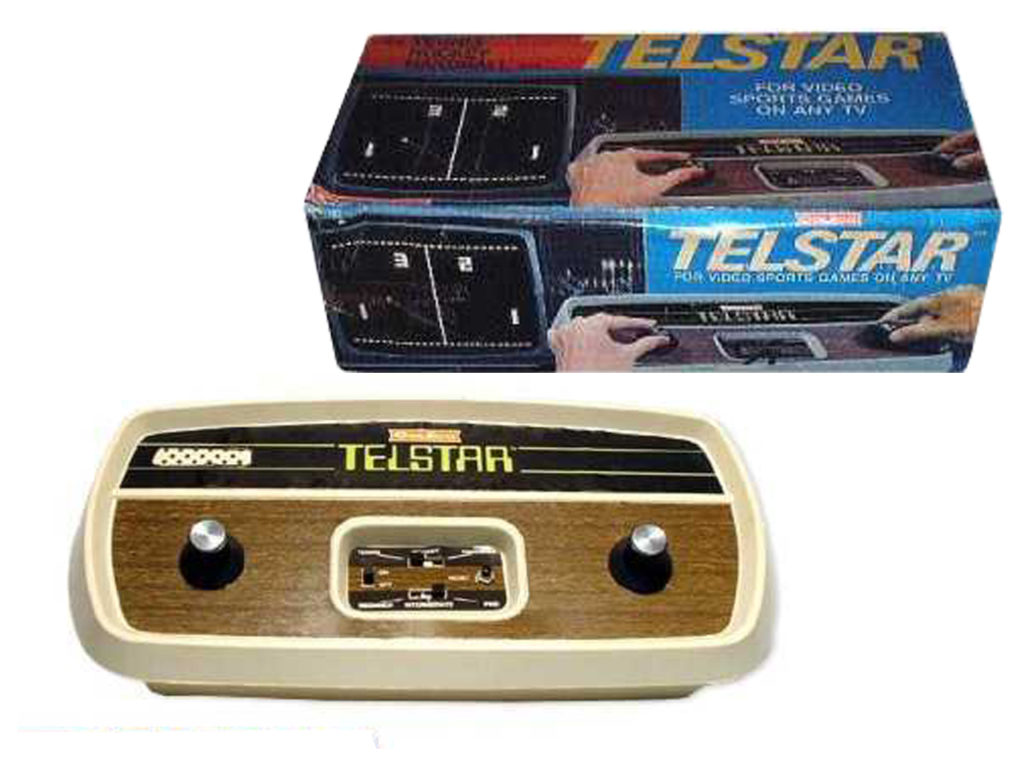1972–1978
Destaques: Odyssey, Pong, Telstar, Color TV Game
The first generation of video game consoles marked the beginning of the home video game industry, covering the period from 1972 to 1980. This generation introduced the concept of interactive entertainment directly into people’s homes. The starting point was the release of the Magnavox Odyssey in 1972, the world’s first home video game console. Created by Ralph H. Baer, the Odyssey used interchangeable cartridges and featured simple games, often sports-based, such as tennis and hockey.
Other notable consoles from this generation include the Coleco Telstar and the Nintendo Color TV-Game. Most consoles of that time featured pre-programmed games and displayed extremely basic graphics composed of simple dots and lines on the screen. These systems were generally limited to variations of the same game, such as the classic Pong, which simulated table tennis matches.
Technical Information
The first-generation consoles had very simple technology, featuring analog electronic circuits and, in some cases, digital circuits. Most did not have microprocessors and used transistors and basic integrated circuits. The graphics were monochromatic, displaying simple geometric shapes in a single color, and the sounds were rudimentary, often limited to beeps. The controllers were integrated into the console and usually consisted of rotary dials or levers.
General Information
- Period: 1972–1980
- Notable consoles: Magnavox Odyssey, Coleco Telstar, Nintendo Color TV-Game
- Technology: Analog electronic circuits, monochromatic graphics, integrated controls
- Popular genres: Sports games (tennis, hockey), Pong and its variations
Impact and Legacy
Despite technical limitations, the first generation of consoles had a lasting impact on the video game industry. It laid the foundation for the development of more advanced consoles, introduced the concept of video games as a form of home entertainment, and paved the way for companies that would come to dominate the market in the following years. The Odyssey, for example, directly influenced the creation of Atari Pong, which helped popularize video games on a global scale.
Curiosities
- Ralph H. Baer, considered the “father of video games,” created the prototype for the Odyssey in 1967, initially calling it the “Brown Box.”
- The Magnavox Odyssey did not have built-in sound. To accompany the game action, players often resorted to external soundtracks, such as radios or records.
- Many consoles from this generation came with accessories like plastic overlays that were stuck to the TV screen to simulate colored graphics.
- The game Pong, popularized by Atari, was inspired by one of the Odyssey’s games, which led to a legal dispute between Magnavox and Atari.

 Português do Brasil
Português do Brasil




